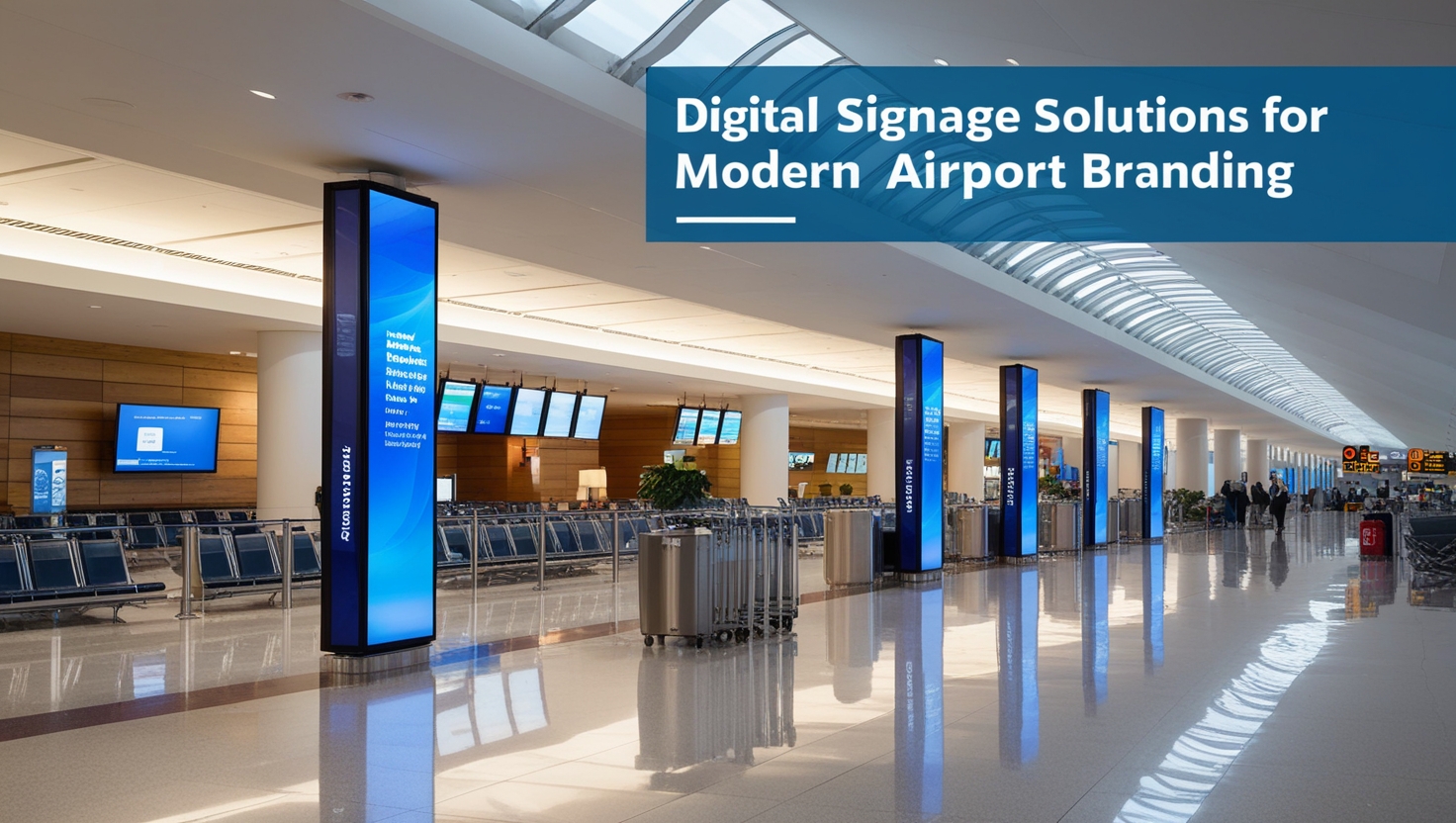Digital signage solutions have become integral to modern airport branding, offering a powerful way to engage travelers and enhance the passenger experience. These solutions leverage advanced technology to create dynamic and interactive displays that surpass traditional static signage. By incorporating digital signage, airports can effectively communicate their brand messages and provide valuable information to a diverse audience. This article explores how digital signage solutions are transforming airport branding and the benefits they offer.
The Rise of Digital Signage Solutions
Digital signage solutions represent a significant advancement in advertising and information dissemination. Unlike traditional signage, which relies on printed materials and static displays, digital signage provides a flexible platform for showcasing high-resolution content. This includes videos, animations, and real-time updates, all of which can capture the attention of travelers more effectively.
Airports, as high-traffic environments, are ideal settings for the implementation of digital signage solutions. These solutions offer the ability to deliver content that is not only visually appealing but also adaptable to the needs of the airport and its passengers. For example, digital displays can feature rotating advertisements, important announcements, and interactive elements that enhance the overall experience for travelers.
Enhancing Passenger Experience Through Real-Time Updates
One of the key benefits of digital signage solutions is their capability to deliver real-time content updates. In an airport setting, where timely information is crucial, this feature plays a vital role in improving operational efficiency and passenger satisfaction.
Digital signage solutions can be used to display up-to-date flight information, including departures, arrivals, and gate changes. This real-time capability helps passengers stay informed and reduces the likelihood of confusion or missed flights. Additionally, digital signage can provide information on delays, cancellations, and weather conditions, ensuring that travelers have the most accurate information available.
Customization and Adaptability for Effective Branding
Digital signage solutions offer a high degree of customization, allowing airports to tailor their displays to specific branding needs and audience preferences. This adaptability is particularly important in creating a cohesive and engaging brand experience.
Airports can use digital signage to showcase a variety of content, including advertisements, promotional offers, and interactive maps. Displays can be programmed to rotate content based on factors such as the time of day, specific events, or targeted demographics. For instance, digital screens in departure lounges might feature travel-related advertisements and special offers, while those in arrival areas could highlight local attractions and services.
The ability to customize content also extends to the visual design of digital signage. Airports can choose from a range of display formats, including large video walls, interactive kiosks, and sleek digital panels. This flexibility ensures that signage can be integrated seamlessly into the airport environment and align with branding guidelines.
Sustainability and Environmental Benefits
Digital signage solutions contribute to a more sustainable approach to airport branding. Traditional signage often requires physical materials such as paper, ink, and adhesives, which can lead to increased waste and resource consumption.
In contrast, digital signage eliminates the need for printed materials, reducing waste and supporting eco-friendly practices. The digital format also allows for easier updates and maintenance, further minimizing the environmental impact associated with traditional signage methods. By adopting digital signage solutions, airports can align with sustainability goals and promote environmentally responsible practices.
Integrating Advanced Technologies for Enhanced Engagement
As technology continues to evolve, digital signage solutions are incorporating advanced features that enhance their effectiveness and engagement capabilities. Emerging technologies such as augmented reality (AR) and artificial intelligence (AI) are expanding the possibilities for airport branding.
Augmented reality can provide immersive experiences by overlaying digital information onto the physical environment. For example, AR can be used to create interactive wayfinding experiences, allowing passengers to use their smartphones or AR glasses to navigate the airport more easily.
Artificial intelligence, on the other hand, can personalize content based on passenger data and behavior. AI algorithms can analyze patterns and preferences to deliver tailored messages and offers, improving the relevance and impact of the content displayed on digital signage boards.
Case Studies of Successful Digital Signage Implementations
Several airports around the world have successfully implemented digital signage solutions to enhance their branding and passenger experience. Here are a few notable examples:
- Changi Airport, Singapore: Changi Airport is renowned for its innovative use of digital signage. The airport features large video walls, interactive kiosks, and real-time flight information displays throughout its terminals. These digital elements contribute to a seamless and engaging travel experience, while also showcasing the airport’s commitment to modern technology.
- Los Angeles International Airport (LAX), USA: LAX has integrated digital signage into its terminal operations to improve passenger flow and communication. The airport uses digital displays to provide real-time updates on flight status, gate information, and security wait times. Interactive touchscreens offer additional services, such as airport maps and dining options.
- Heathrow Airport, London: Heathrow Airport utilizes digital signage to enhance the passenger experience and promote its brand. The airport’s digital signage strategy includes large-scale video walls, interactive wayfinding systems, and promotional displays for airport services and retail outlets.
Future Directions for Digital Signage in Airport Branding
Looking ahead, the role of digital signage in airport branding is expected to grow even further. Innovations in technology will continue to drive the development of more advanced and interactive solutions. Key areas to watch include:
- Enhanced Personalization: As AI and data analytics capabilities improve, digital signage will offer increasingly personalized experiences for travelers. Custom-tailored content based on individual preferences and behaviors will become more prevalent.
- Smart Integration: The integration of digital signage with other smart technologies, such as IoT devices and mobile apps, will create a more connected and efficient airport environment. This smart integration will enable seamless interactions between digital displays and other airport systems.
- Immersive Experiences: Advancements in AR and VR technologies will pave the way for new and immersive branding experiences. Airports will explore creative ways to use these technologies to engage travelers and enhance their overall experience.
Airport Branding Innovations
Digital signage solutions are revolutionizing airport branding by providing dynamic, customizable, and sustainable options for engaging travelers. These solutions offer real-time updates, enhance passenger experience, and contribute to environmentally responsible practices. As technology continues to advance, digital signage will play an increasingly important role in shaping the future of airport branding, offering new opportunities for creativity and innovation in the way airports connect with their audience.





